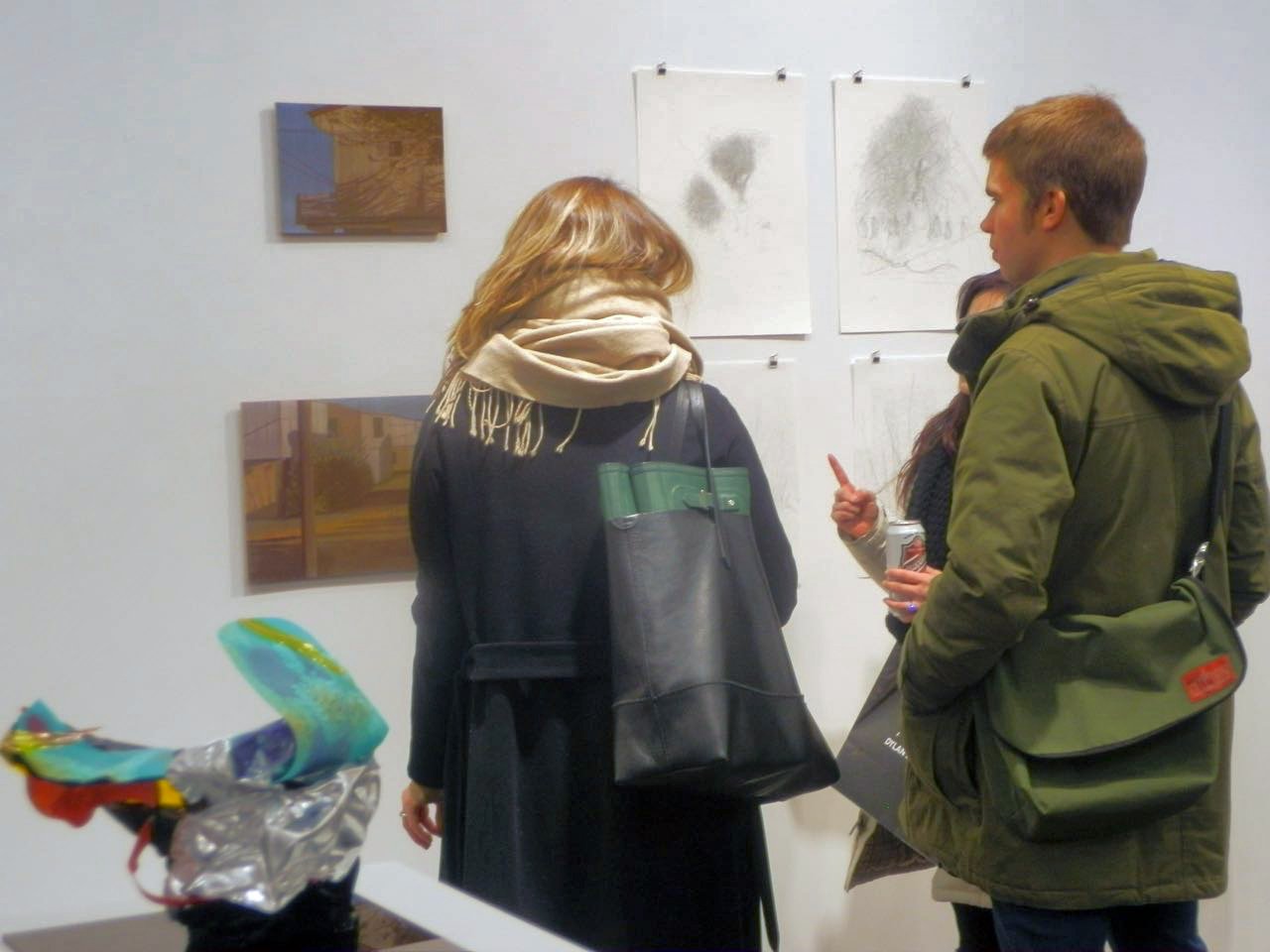Salon Zürcher, Zürcher Gallery, New York
2-8 March 2015
Vane is pleased to be participating in Salon Zürcher in New York. We present work by Jorn Ebner, Mark Joshua Epstein and Simon Le Ruez at Zürcher Gallery, 33 Bleecker Street, New York, USA.
In his recent series of works on paper, Jorn Ebner is working towards the dissolution of the figurative image. His starting point is the Death Dwarf, a character from William S Burroughs’ Nova Express, who re-emerges in these works as variations of Hans Holbein’s Danse Macabre, a series of 41 woodcuts, which Ebner has re-created as gestural drawings. The drawings depict Death Dwarf and his environment, both in states of immateriality or digital fiction; music, literature and art are points of departure, reference and subject matter at the same time. For the series, Death Drum, which draws its title from a Burroughs short story, Ebner uses one of Holbein’s prints depicting a drum-beating skeleton, as a model for the dissolution of the death figure. The figure merges into an environment of pencil strokes. Music, literature and art are points of departure, reference and subject matter at the same time.
Mark Joshua Epstein’s paintings attempt to resist depiction. However, the term abstraction is a kind of ham-fisted translation: for him, interactions manifest in the work as awkward spatial relationships, uncomfortable colour pairings, and dissonant patterns. By welcoming the visual information deployed in typically domestic objects such as clothing, wallpaper, and textiles into his work, he purposefully confronts historical criticisms of abstraction.
Epstein’s work has ranged from engaging with the intricate patterns printed on the interiors of envelopes sent from banks and utility companies, to exploring the rhythms and repetition of patterning found in traditional textiles from Turkey and Central Asia. Through juxtaposing such patterns in pictorial space, Epstein invites viewers to question conceptual relationships between different visual traditions that employ pattern as both deception and disguise. The process of combining different types of patterns generates responses from Epstein’s own painterly vocabulary, which become, like the information in envelopes and the fabrics draped on the body, by turns entangled, obscured, and revealed.
Simon Le Ruez’s work, including painting, sculpture, installation and drawing, shares an emphasis on materiality, reduction, deconstruction and remaking. It thrives on both aesthetic and psychological tensions. Within this framework, his expanding oeuvre revolves around the thematic fields of longing, concealment, transgression and release. His work aims to blur the distinctions between a number of media and through this a commentary evolves on and around various forms of opposition. His work revels in joyful forms of appropriation, interjecting colour and ambiguous form. This may be through winding coloured thread around the painting of an anonymous location, both obscuring and revivifying the image, the altering of antique postcards, or through the small-scale paper and plastic sculptures that defy any fixed classification through their spirited aesthetic transgressions.
Zürcher Gallery
33 Bleecker Street
New York
USA
www.galeriezurcher.com
Share this page








